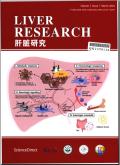Nanoparticle-based therapeutic strategies for chronic liver diseases: Advances and insights
IF 2.1
Q2 Medicine
引用次数: 0
Abstract
The liver is pivotal in protein synthesis, glucose and lipid metabolism, and detoxification. However, the liver is susceptible to both acute and chronic disorders, with chronic conditions being fatal. Chronic liver diseases (CLDs), such as liver fibrosis, which usually represents the early manifestation of cirrhosis, primarily result from hepatitis B and C viruses infections, metabolic disorders, alcohol abuse, immune-mediated attacks, and cholestatic injury. The progression of liver fibrosis contributes to the development of cirrhosis, which can further lead to hepatocellular carcinoma, portal hypertension, hepatic decompensation, and hepatic encephalopathy. The extracellular matrix deposition over time leading the hepatocyte necrosis (cirrhosis) is the main structural feature of CLDs and may cause hepatic failure. Certain conditions, such as hepatitis and autoimmune diseases, may promote the rapid deterioration of liver function. Acute and chronic liver failure causes may vary, with early referral for liver transplantation improving the chance of recovery. The healthcare system need improvements to manage patients with non-alcoholic fatty liver disease and alcoholic fatty liver disease, as they have the potential to progress to cirrhosis. Both conditions involve the release of reactive oxygen species and damage-associated molecular patterns from cytokines, hepatic stellate cells, and hepatocyte autophagy, leading to prolonged inflammation. While various medications target fibrosis and liver damage, nanoparticle-based drug delivery systems offer additional promise by promoting faster liver regeneration. This review provides a comprehensive overview of the potential of nanoparticle systems as a future therapeutic approach for treating liver disorders.
基于纳米颗粒的慢性肝病治疗策略:进展和见解
肝脏在蛋白质合成、糖脂代谢和解毒中起关键作用。然而,肝脏容易受到急性和慢性疾病的影响,慢性疾病是致命的。慢性肝病(CLDs),如肝纤维化,通常是肝硬化的早期表现,主要由乙型和丙型肝炎病毒感染、代谢紊乱、酗酒、免疫介导的攻击和胆汁淤积损伤引起。肝纤维化的进展促进肝硬化的发展,肝硬化可进一步导致肝细胞癌、门脉高压、肝代偿失代偿和肝性脑病。随着时间的推移,细胞外基质沉积导致肝细胞坏死(肝硬化)是CLDs的主要结构特征,并可能导致肝功能衰竭。某些情况,如肝炎和自身免疫性疾病,可能会促进肝功能的迅速恶化。急性和慢性肝功能衰竭的原因可能各不相同,早期转诊肝移植可提高恢复的机会。医疗保健系统需要改进,以管理非酒精性脂肪性肝病和酒精性脂肪性肝病患者,因为他们有可能进展为肝硬化。这两种情况都涉及细胞因子、肝星状细胞和肝细胞自噬释放活性氧和损伤相关分子模式,导致炎症延长。虽然各种药物针对纤维化和肝损伤,但基于纳米颗粒的药物输送系统通过促进更快的肝脏再生提供了额外的希望。这篇综述提供了纳米颗粒系统作为治疗肝脏疾病的未来治疗方法的潜力的全面概述。
本文章由计算机程序翻译,如有差异,请以英文原文为准。
求助全文
约1分钟内获得全文
求助全文

 求助内容:
求助内容: 应助结果提醒方式:
应助结果提醒方式:


